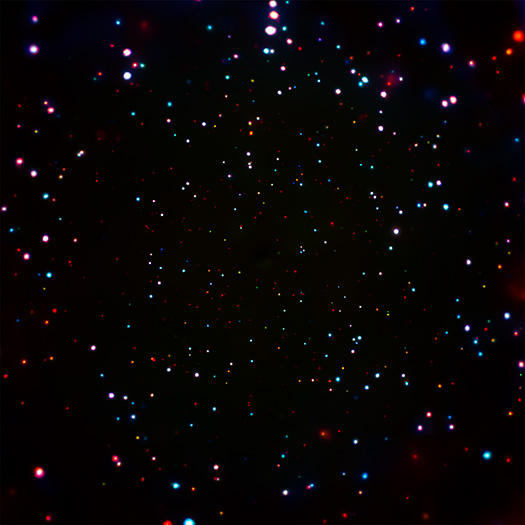By combining forefront X-ray observations with state-of-the-art supercomputer simulations of the buildup of galaxies over cosmic history, researchers have provided the best modeling to date of the growth of the supermassive black holes found in the centers of galaxies as described in a press release from Penn State.
The research team led by Penn State astronomers used complementary data from NASA’s Chandra X-ray Observatory, the European Space Agency’s X-ray Multi-Mirror Mission-Newton (XMM-Newton), and the Max Planck Institute for Extraterrestrial Physics’ eROSITA telescope. In total, they studied over 8,000 rapidly growing black holes in a sample of 1.3 million galaxies.
Using this hybrid approach, the research team derived a complete picture of black-hole growth over 12 billion years, from the Universe’s infancy at around 1.8 billion years old to the present day at 13.8 billion years old. They studied the two main channels for the growth of black holes: a process called accretion when they consume cold gas from their host galaxy, or by mergers with other supermassive black holes when galaxies collide.
The researchers found that, in most cases, accretion dominated black-hole growth. Mergers made notable secondary contributions, especially over the past 5 billion years of cosmic time for the most-massive black holes. Overall, supermassive black holes of all masses grew much more rapidly when the Universe was younger. Because of this, the total number of supermassive black holes was almost settled by 7 billion years ago, while earlier in the Universe many new ones kept emerging.
The background image on the left-hand side of this graphic shows a data image combining X-rays from XMM-Newton (blue) and optical light data (yellow and green). The inset is an artist’s illustration that shows a supermassive black hole accreting material from a surrounding disk, which is what generates the X-rays that astronomers have observed. On the right side of the graphic, supercomputer modeling of gas density over cosmic time using IllustrisTNG is shown. The densest regions, showing galaxies and clusters of galaxies, are in green.

These results were presented at the 244th meeting of the American Astronomical Society in Wisconsin by Fan Zou of Penn State. The research involves two papers, one led by Fan Zou that was published in The Astrophysical Journal in April 2024, and one not yet published that will be submitted to the same journal. In addition, the research team includes Niel Brandt (Penn State), Zhibo Yu (Penn State), Hyungsuk Tak (Penn State), Elena Gallo (University of Michigan), Bin Luo (Nanjing University in China), Qingling Ni (Max Planck Institute for Extraterrestrial Physics in Germany), Yongquan Xue (University of Science and Technology of China), and Guang Yang (University of Groningen in the Netherlands).
NASA's Marshall Space Flight Center manages the Chandra program. The Smithsonian Astrophysical Observatory's Chandra X-ray Center controls science from Cambridge Massachusetts and flight operations from Burlington, Massachusetts.
On the left is an X-ray image from XMM-Newton combined with optical light. Pinpoints of light, mostly in shades of gold, blue, and green, are scattered over the black background of space. One point of blue light, a supermassive black hole, is outlined within an illustrated, gray square. The square has lines protruding to our right that connect it with an artist's concept image of a black hole.
The X-ray and optical image on our left, the image containing the square, slowly dissolves as we move toward the right into an image of a supercomputer model of gas density across enormous distances. The model shows a multitude of teal-colored dots and filaments that are converging in some places, forming larger balls of teal-colored light. The patterns appear somewhat similar to the neural networks imaged in the brains of humans and other animals.
|
||||||||||||||||

| The Basics |
| What is it? |
| How is it Made? |
| What do the Colors Mean? |

